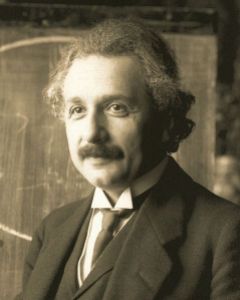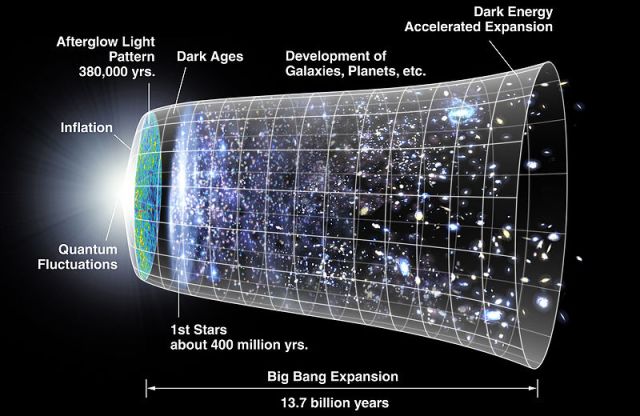Just 100 years ago Einstein introduced the so-called cosmological constant, the physical constant that perhaps has experienced the most changing fortunes.
The Rise
In 1915 Einstein published the field equations of general relativity. These formulas create a link between the presence of matter and energy and the curvature of space-time. Gravitation was then explained as a consequence of the space-time curvature caused by matter and energy.

In 1917, Einstein applied these equations in a physical model for the entire universe and realized that it was not possible to have a static universe within that model. The universe should expand or contract, but it couldn’t stay still.
At that time the idea the universe could evolve was considered so bizarre that Einstein introduced a new term into the field equations called a cosmological constant, just to make the existence of a static universe a feasible solution.
The Fall
In 1929 Edwin Hubble made one of the more sensational discoveries of the century. He found that the galaxies beyond those in our local group were moving away from us, and that they were receding at a speed that was proportional to their distance. This meant that our universe is expanding.

The cosmological constant was introduced just to fit a static universe in the theory. With the discovery of the universe’s expansion the constant no longer seemed to be a necessary hypothesis.
As a consequence, from the early 30’s almost all research in the field of cosmology hypothesized that the cosmological constant was equal to zero.
Einstein realized that starting from the equations, he could have hypothesized about the universe’s expansion before it was experimentally discovered and called the introduction of the cosmological constant his biggest blunder.
The Comeback
During the 90’s, many cosmological observations began suggesting that the expansion of the universe is accelerating. In particular, in 1998 two groups of cosmologists, the Supernova Cosmology Project and the High-Z Supernova Search Team, independently came to this conclusion observing the redshift of supernovae.
The discovery was a huge breakthrough because most cosmologists expected to find that the expansion was decelerating.
That was one of those fascinating moments in physics history when everybody expects A, and B just happens, making it clear that something deep in our theory needs to be better understood.
This acceleration was not compatible with zero cosmological constant models. After more than 60 years, scientists began again to consider the presence of this term in the equations of general relativity.

The reasons for the constant’s comeback were completely different from the ones that led Einstein to introduce it, but finally the constant regained its position in the equations.
The Mystery Continues
Is everything clear now? Not at all. The interpretation of the cosmological constant is still one of the biggest mysteries in physics.
In the field equations of general relativity, you can identify two parts, the physical terms which describe the distribution of matter and energy and the geometrical terms related to the curvature of space-time.
$$\boxed{\text{matter/energy terms}} = \boxed{\text{space-time curvature terms}}$$
It’s not clear whether the cosmological constant should be considered an element of the geometrical part or as a term of the energy/matter part generated by some physical process not yet identified (or even whether it should be the result of the sum of both of these components).
By now there are several hypotheses but no certainty. So young physicists, come forward! This is a problem still waiting for someone to explain it!
For more mathematical details on the cosmological constant, take a look at this nice post by Peter Coles: One Hundred Years of the Cosmological Constant.



Interesting post! I just finished a chapter in The Hidden rality , that tlked about the inflationary cosmology and the cosmological constant. It said that cosmological constant, some hypothesise, is a kind of feild that creats negative gravity due to negative pressure(relativity allows that) that played a role during inflation and is responsible for the uniform microwave backgrounf